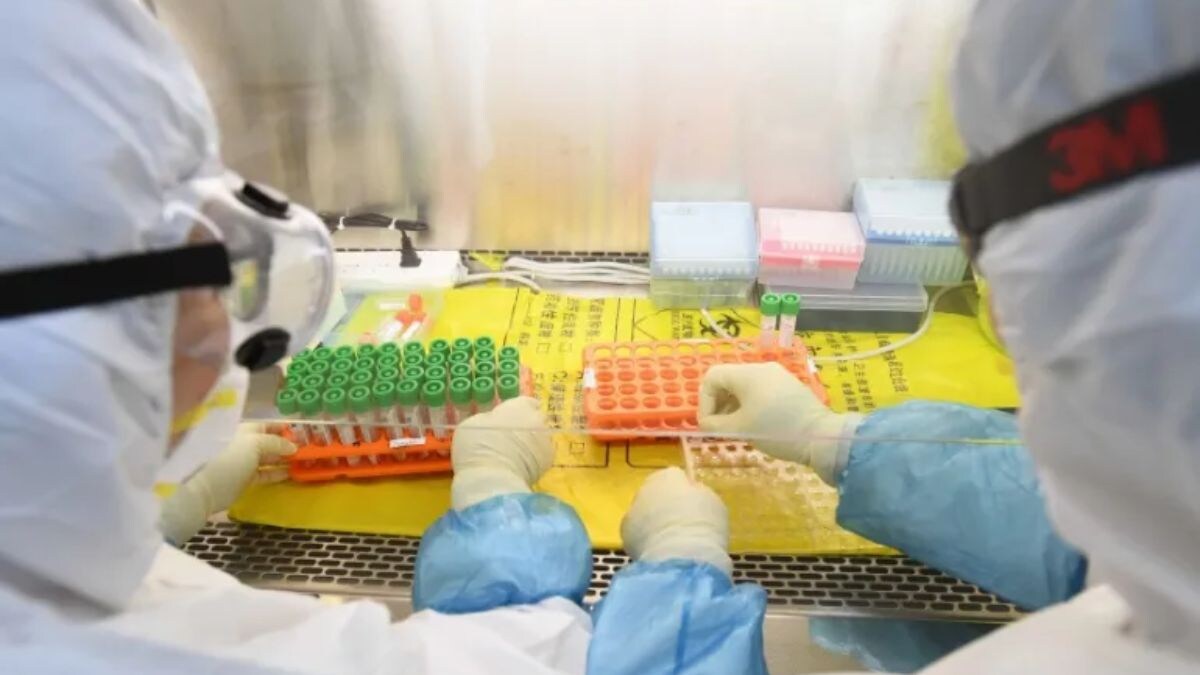A study by the University of Edinburgh suggests Covid-19 did not originate in China’s Wuhan but evolved naturally in the bat population in northern Laos and China’s Yunnan province. The study, now published in the peer-reviewed journal Cell, challenges the ’lab-leak’ theory championed by US President Donald Trump. Here’s what it says
read more
More than four years since the world was brought to a standstill by Covid-19, the question of how the virus first emerged continues to spark fierce debate. Was it the result of a catastrophic lab accident in Wuhan? or did it did it naturally spill over from animals sold in wet markets?
Now, a major new study led by scientists from the University of Edinburgh throws fresh weight behind the latter theory, claiming that Covid-19 did not originate in labs in China’s Wuhan but most likely evolved naturally in the bat population in Southeast Asia.
The new study has now challenged the
“lab-leak theory”
championed by US officials, including President Donald Trump.
Here’s what it says.
What does the Edinburgh study explain?
The study published in the peer-reviewed journal Cell earlier this month has provided what scientists are calling the strongest genetic evidence yet against the lab leak theory of Covid-19 ’s origin.
Led by researchers from the University of Edinburgh and involving experts from 20 institutions across the US, Europe, and Asia, the study analysed 167 genomes of bat coronaviruses. Their aim was to trace the evolutionary history of the virus that caused the global pandemic.
The team found that the closest known relatives of Sars-CoV-2 — the virus responsible for Covid-19 — were circulating in bat populations in northern Laos and China’s Yunnan province. According to the findings, the virus’s most recent ancestor likely emerged five to seven years before Covid-19 was first detected in late 2019.
“The data clearly indicate that the progenitor of Sars-CoV-2 was circulating in bats thousands of kilometres away from Wuhan,” lead author Jonathan Pekar said in an interview with science news outlet EurekAlert. “This puts the virus’s evolutionary origins well outside the geographic scope of Wuhan’s research facilities.”
This conclusion directly challenges the lab leak theory, a narrative that is heavily pushed by
US President Donald Trump
and other officials, claiming that the virus escaped from a laboratory in Wuhan.
In fact, the White House website, which once focused primarily on testing and vaccination efforts, now prominently features the words “LAB LEAK,” “TRUTH,” and “ORIGIN” in bold capital letters.
This version of events argues that Covid-19 has biological markers not commonly found in naturally occurring viruses, and that researchers at the
Wuhan Institute of Virology
(WIV) showed Covid-like symptoms in late 2019, before the virus was linked to the now-infamous
wet market.
It also insists that had the virus emerged naturally, the scientific evidence would have surfaced clearly by now.
But the Edinburgh study now presents a sharply different narrative.
Was illegal wildlife trade responsible for Covid-19?
The latest research points to human-driven activity, particularly the illegal wildlife trade, as a likely factor behind the spread of the virus that caused Covid-19.
According to researchers, the most recent ancestor of the virus likely emerged around 2017. Its closest genetic relatives have been found in bat species from northern Laos, which is more than 2,700 kilometres away from Wuhan, far beyond the typical migration range of bats.
So, scientists believe it was the movement of infected animals through
illegal trade networks
that brought the virus closer to human populations.
Senior author Michael Worobey, an evolutionary biologist at the University of Arizona, highlighted how this pattern isn’t new.
“The Sars-CoV-1 virus also appeared far from its bat origins due to intermediate hosts like palm civets and raccoon dogs. This pattern likely repeated with Sars-CoV-2,” he told the South China Morning Post.
This suggests that it wasn’t natural migration, but the human exploitation of wildlife, through trade and trafficking, that played a critical role in spreading the virus to densely populated areas.
The migration of the virus that causes Covid-19 mirrors historical zoonotic outbreaks, the Manchurian plague of 1910, for instance, was triggered when marmots carrying Yersinia pestis were transported via the Trans-Siberian Railway from Russia into Harbin, China. That outbreak killed over 60,000 people.
However, unlike the well-documented origins of the Manchurian plague and Sars, Covid-19’s exact transmission pathway from bats to humans still remains a mystery.
With input from agencies





















